How to Choose the Right Game Art Outsourcing Partner: A Studio's Checklist
Your game's visual identity is taking shape in your mind—distinctive characters, immersive environments, and a cohesive art style that perfectly complements your gameplay. But as deadlines loom and resources stretch thin, maintaining consistent art quality becomes increasingly challenging. This scenario plays out in game studios worldwide, from indie teams to AAA developers.
When internal art teams reach capacity or specialized skills are needed, finding the right game art outsourcing partner becomes crucial. Yet, with countless studios claiming expertise, how do you identify a partner who will truly understand your vision, integrate with your workflow, and deliver assets that elevate your game?

Common Challenges When Outsourcing Game Art
Before diving into our selection checklist, it's worth acknowledging the hurdles many studios face when outsourcing art production. Understanding these challenges helps frame what to look for in an ideal game art outsourcing partner.
Quality Inconsistencies
Assets that don't match your established art style or meet technical specifications can create jarring visual inconsistencies. These issues often emerge late in production, requiring costly revisions or compromises to your game's visual identity.
Communication Barriers
Time zone differences, language barriers, and unclear feedback channels can lead to misunderstandings about project requirements. These communication gaps often result in missed deadlines and repeated revision cycles that strain both budgets and relationships.
Quality Inconsistencies
When outsourced assets don't properly integrate with your existing pipeline, technical issues arise. Incompatible file formats, improper rigging, or optimization problems can create significant technical debt for your development team.
Don't Let Art Outsourcing Derail Your Project
Our team has helped studios of all sizes navigate these challenges. Let's discuss how we can support your specific art outsourcing needs.
Schedule a Consultation10-Point Checklist for Selecting Your Game Art Outsourcing Partner
Finding the right game art outsourcing partner requires a systematic approach. Use this comprehensive checklist to evaluate potential partners and make an informed decision that aligns with your project's needs and goals.
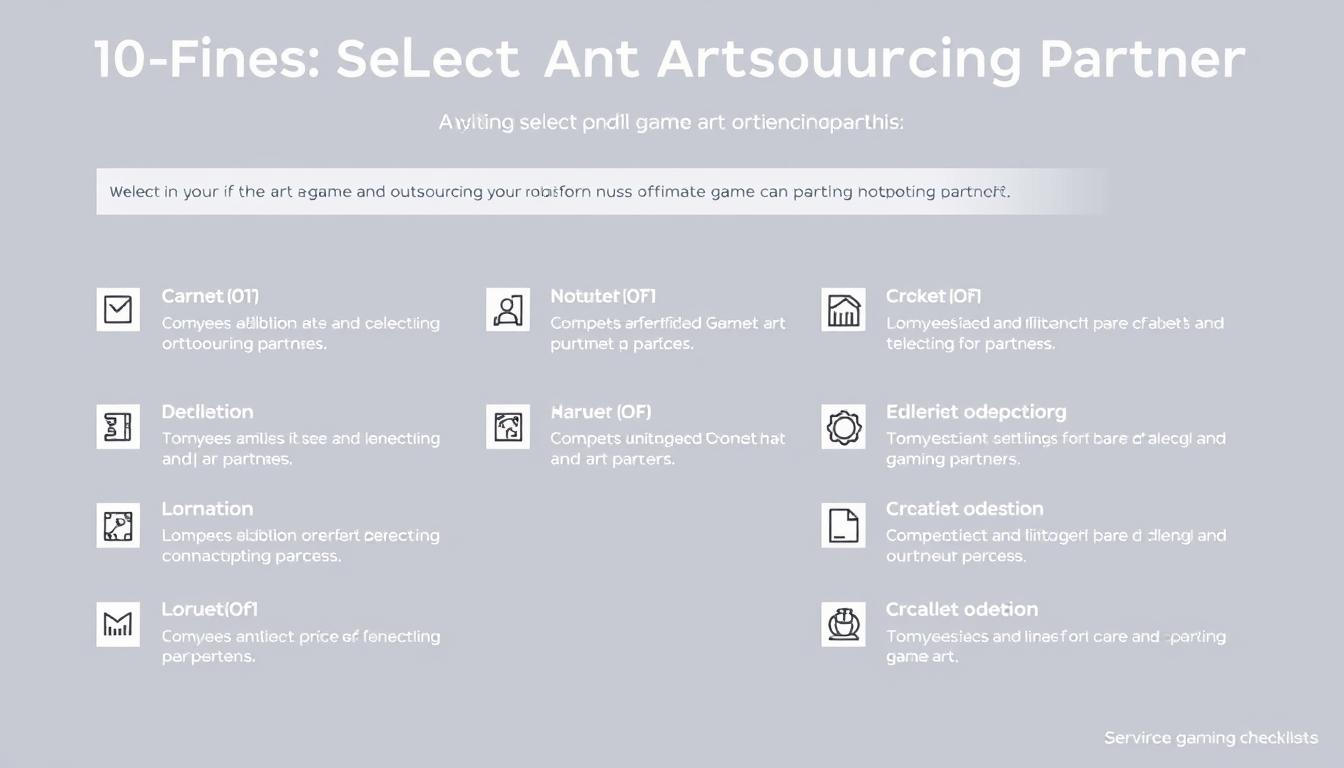
1. Portfolio Evaluation
- Style Range: Look for versatility across art styles relevant to your project (realistic, stylized, cartoon, etc.)
- Technical Complexity: Assess their ability to handle the complexity level your game requires
- IP Alignment: Check for experience with similar game genres or art direction
- Consistency: Verify that quality remains consistent across different projects and asset types
2. Technical Capabilities
- Software Proficiency: Confirm expertise in industry-standard tools (Maya, Blender, Substance, etc.)
- Engine Experience: Verify familiarity with your game engine (Unity, Unreal, custom)
- Optimization Skills: Assess their ability to create assets optimized for your target platforms
- Pipeline Compatibility: Ensure their workflow can integrate with your existing pipeline
3. Communication Framework
- Response Time: Establish expectations for communication frequency and response windows
- Language Proficiency: Verify English (or your working language) fluency among key team members
- Documentation: Review their process for documenting requirements and feedback
- Feedback Channels: Identify primary and backup communication methods
4. Project Management Approach
- Milestone Structure: Evaluate how they break down projects into manageable deliverables
- Progress Tracking: Understand their system for reporting progress and flagging issues
- Resource Allocation: Confirm dedicated resources for your project
- Adaptability: Assess their flexibility in responding to scope changes
Need Help Evaluating Potential Partners?
Our team can help you assess art outsourcing studios against your specific requirements. Let's connect for a no-obligation consultation.
Get Expert Guidance5. Quality Assurance Processes
- Review Stages: Understand their internal quality checks before deliveries
- Revision Policy: Clarify their approach to iterations and feedback implementation
- Technical Validation: Verify they test assets in-engine before delivery
- Standards Compliance: Confirm adherence to industry and platform-specific standards
6. Team Composition
- Specialist Expertise: Identify specific skills relevant to your project needs
- Team Stability: Understand their artist retention and team consistency policies
- Art Direction: Evaluate the experience level of art directors who will oversee your project
- Scaling Capacity: Assess their ability to scale resources as project needs change
7. Pricing Structure
- Pricing Model: Compare fixed-price vs. hourly rate options for your project type
- Cost Transparency: Verify all potential costs are clearly outlined
- Payment Terms: Review milestone-based payment schedules and deposit requirements
- Value Assessment: Consider quality-to-cost ratio rather than lowest price
| Pricing Model |
Best For |
Advantages |
Disadvantages |
| Fixed-Price |
Well-defined projects with clear specifications |
Predictable budgeting, reduced financial risk |
Less flexibility for changes, may include risk premium |
| Hourly Rate |
Evolving projects with changing requirements |
Maximum flexibility, pay only for actual work |
Less budget predictability, requires more oversight |
| Hybrid Model |
Complex projects with both fixed and variable components |
Balances predictability with flexibility |
More complex to manage, requires clear boundaries |
8. Legal Protections
- IP Rights: Ensure clear ownership transfer of all created assets
- Confidentiality: Review NDA terms and information security practices
- Dispute Resolution: Understand the process for resolving disagreements
- Contract Clarity: Verify all expectations are explicitly documented
9. Previous Client Experiences
- Testimonials: Read client feedback beyond what's featured on their website
- Reference Checks: Request contact with previous clients with similar projects
- Industry Reputation: Research their standing within the game development community
- Long-term Relationships: Identify clients who have worked with them repeatedly
10. Cultural Alignment
- Values Compatibility: Assess alignment with your studio's core values and work approach
- Communication Style: Evaluate whether their communication style matches your preferences
- Problem-solving Approach: Understand how they handle challenges and conflicts
- Passion for Games: Gauge their genuine interest in games and your specific project
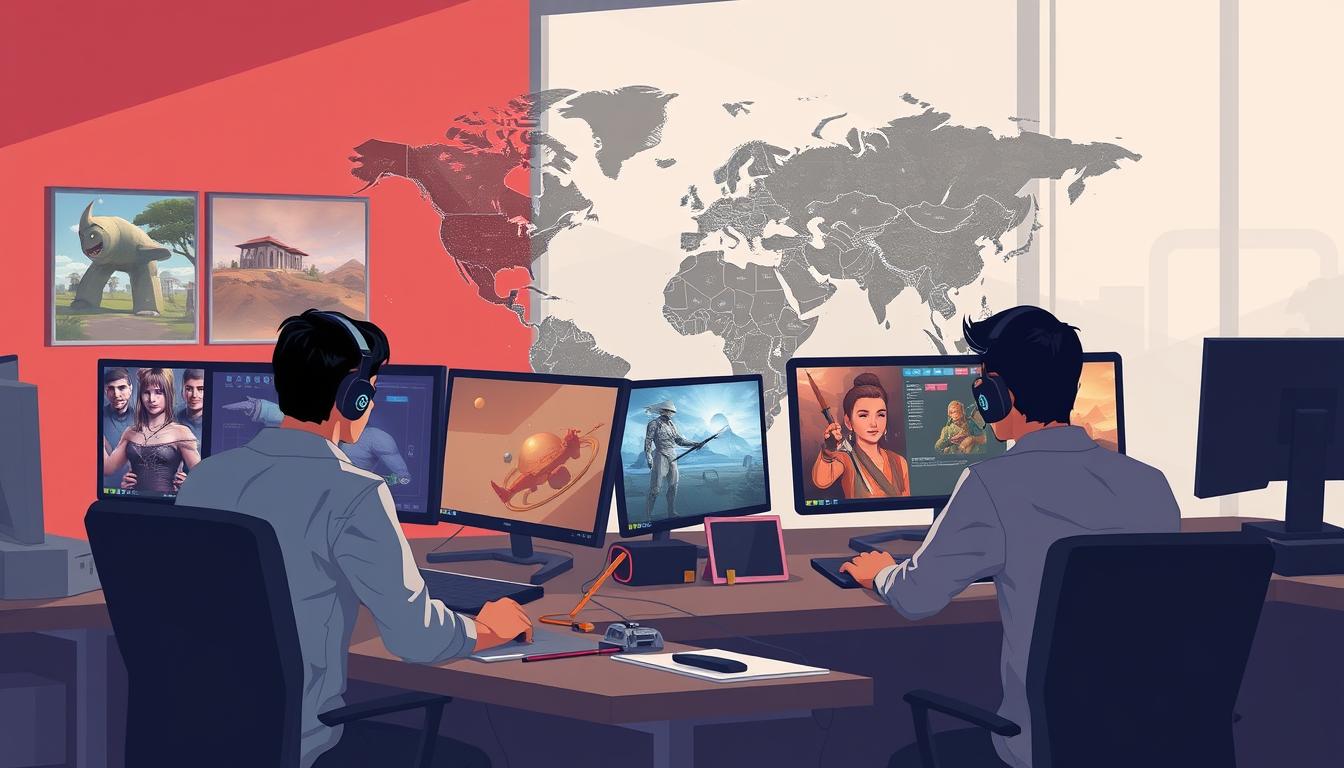
3 Key Considerations Often Overlooked
Accurately estimating team bandwidth is crucial for realistic scheduling and budget allocation. Unlike in-house teams, outsourced resources often work on multiple projects simultaneously, making bandwidth calculation more complex.
Cultural and Timezone Alignment
Working across different cultures and time zones presents unique challenges that can significantly impact project outcomes. Consider these factors when evaluating potential partners:
- Overlapping Work Hours: Aim for at least 2–3 hours of real-time collaboration daily
- Cultural Holidays: Account for different national holidays in project scheduling
- Communication Norms: Understand cultural differences in feedback styles and directness
- Work-Life Expectations: Align on availability for urgent issues outside standard hours

Pipeline Integration Capabilities
Technical compatibility between your internal systems and your outsourcing partner's workflow can make or break a project. Evaluate these aspects of pipeline integration:
- Version Control: Confirm compatibility with your preferred version control system (Git, Perforce, etc.)
- Project Management Tools: Verify integration with your task-tracking platforms (Jira, Trello, etc.)
- Communication Platforms: Ensure willingness to use your preferred channels (Slack, Discord, etc.)
- File Naming Conventions: Check adaptability to your established naming and organization systems
Post-Launch Support Policies
The relationship with your art outsourcing partner shouldn't end at delivery. Understand their approach to supporting assets after they've been integrated into your game:
- Bug Fixes: Clarify responsibility for addressing issues discovered after delivery
- Asset Updates: Understand their process for updating assets as your game evolves
- Documentation: Verify they provide comprehensive documentation for future reference
- Knowledge Transfer: Assess their willingness to train your team on maintaining delivered assets
Ensure Seamless Integration With Your Team
We prioritize alignment with your existing workflows and tools. Let's discuss how we can adapt to your specific pipeline requirements.
Discuss Your Pipeline NeedsReal-World Success Stories
Learning from others' experiences can provide valuable insights for your own outsourcing decisions. Here are two case studies that demonstrate effective partnerships with game art outsourcing studios.
Real-World Budget Examples for Different Game Project Scales
Understanding how budgets scale across different project sizes can provide valuable benchmarks for your own planning. Here are three real-world examples of outsourced game development budgets:
Real-World Budget Examples for Different Game Project Scales
Moonlight Games, a 5-person indie studio developing a stylized adventure game, faced significant art production challenges with their limited in-house resources. Their initial approach of hiring freelancers resulted in inconsistent quality and missed deadlines.
The Challenge:
- Limited budget for creating 50+ unique character models and environments
- Tight 8-month production schedule for all art assets
- Need for consistent art style across all game elements
The Solution:
After careful evaluation using a checklist similar to ours, Moonlight partnered with a specialized game art outsourcing studio that offered:
- Partnered with a specialized game-art outsourcing studio
- Dedicated team of 4 artists experienced in the target art style
- Weekly progress reviews and milestone-based deliveries
- Clear communication channels with 4+ hours of timezone overlap
The Results:
- 40 % cost reduction versus previous freelancer approach
- All assets delivered 2 weeks ahead of schedule
- Consistent quality that required minimal revisions
- Ongoing relationship for DLC and sequel development
Achieve Similar Results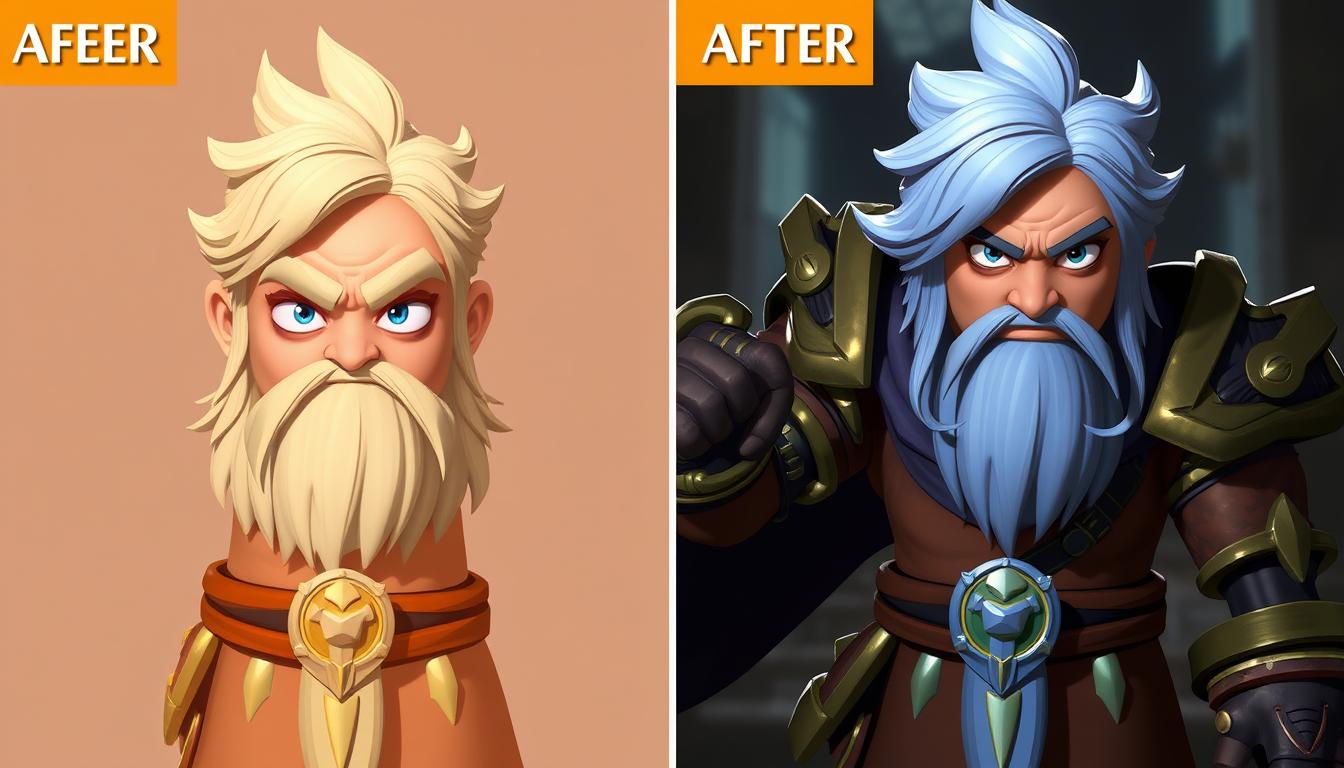
Case Study: How Mid-Size Studio Vertex Games Scaled Art Production for AAA Quality
Vertex Games, a 30-person studio developing an open-world RPG, needed to significantly scale their art production to meet publisher expectations without expanding their permanent team.
The Challenge:
- Creating 200+ high-quality environment assets within 12 months
- Maintaining AAA visual quality with mid-size studio resources
- Seamless integration with existing art team and established pipeline
The Solution:
Vertex implemented a hybrid approach, keeping core art direction in-house while partnering with a specialized game art outsourcing studio that provided:
- Scalable team size that adjusted based on production phases
- Direct integration with Vertex’s version-control and project-management systems
- Dedicated art director who worked hand-in-hand with Vertex’s internal team
The Results:
- Successfully delivered all assets on schedule and within budget
- Achieved visual quality that exceeded publisher expectations
- Reduced internal team stress and prevented burnout
- Established long-term partnership for future projects
Scale Your Art ProductionRed Flags to Watch For
While identifying positive qualities in a game art outsourcing partner is crucial, recognizing warning signs can help you avoid problematic relationships. Be cautious if you encounter these red flags during your evaluation process.
Vague or Inconsistent Portfolio
Be wary of studios with portfolios that lack detailed information about their specific contributions to showcased projects. Inconsistent quality across samples or inability to provide additional examples upon request may indicate capability issues.
Communication Delays
If a studio is slow to respond during the inquiry and negotiation phase, this often foreshadows communication problems during production. Watch for delayed responses, incomplete answers to questions, or reluctance to schedule live discussions.
Resistance to Contracts
Any hesitation to formalize agreements, particularly regarding intellectual property rights or confidentiality, should raise immediate concerns. Professional partners will welcome clear contractual terms that protect both parties.
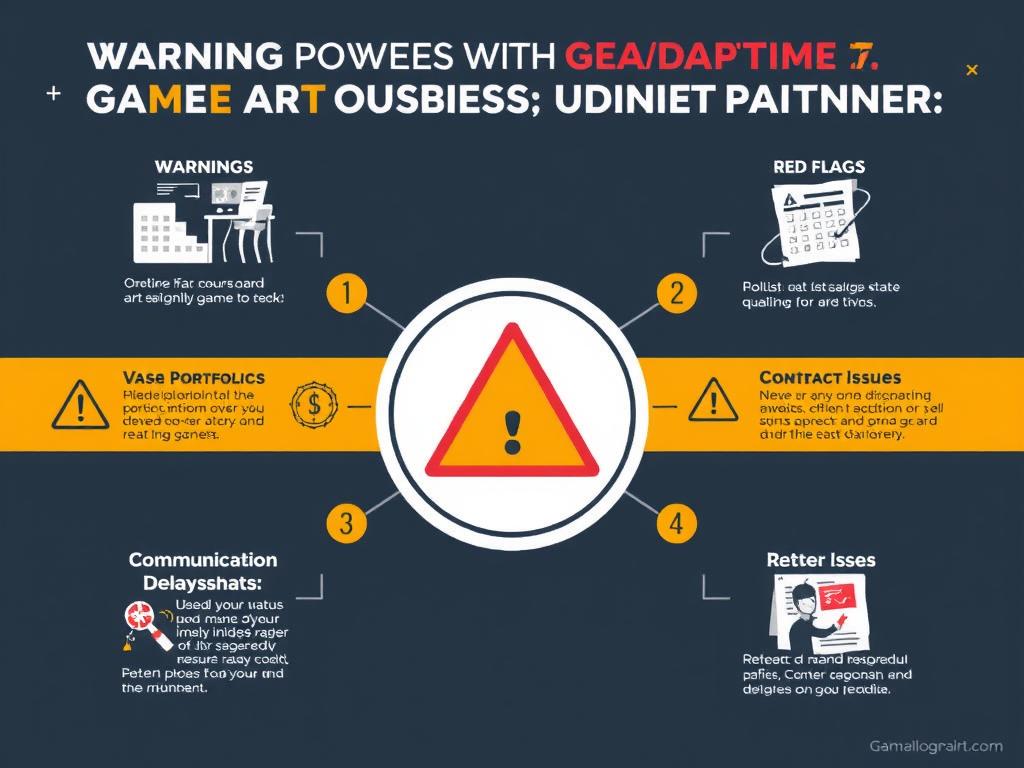
Unwillingness to Provide References
Reputable studios should readily provide references from previous clients. Reluctance to connect you with past partners or offering only very limited references may indicate customer satisfaction issues.
Unusually Low Pricing
While competitive pricing is desirable, rates significantly below market average often result in quality compromises or hidden costs later. Understand what factors contribute to a studio's pricing structure before being swayed by unusually low quotes.
Lack of Process Transparency
Studios should clearly articulate their production process, quality assurance methods, and project management approach. Vague explanations or resistance to discussing workflow details suggests potential organizational issues.
Making Initial Contact: Template Questions
When reaching out to potential game art outsourcing partners, asking the right questions helps you efficiently gather crucial information. Use these template questions as a starting point for your initial conversations.
"The questions you ask during initial contact reveal as much about your studio's organization as they do about the potential partner's capabilities. Prepare thoughtfully to demonstrate your professionalism."
Project Scope Assessment:
- “What information do you need from us to provide an accurate estimate for [specific asset type]?”
- “What is your typical timeline for producing [X number] of [specific asset type]?”
- “How do you handle scope changes after a project has begun?”
- “Can you share examples of similar projects you’ve completed in terms of style and scale?”
Process and Communication:
- “What does your typical feedback and revision process look like?”
- “How do you handle communication across different time zones?”
- “Who will be our primary point of contact, and what is their experience level?”
- “What project management and communication tools do you use?”
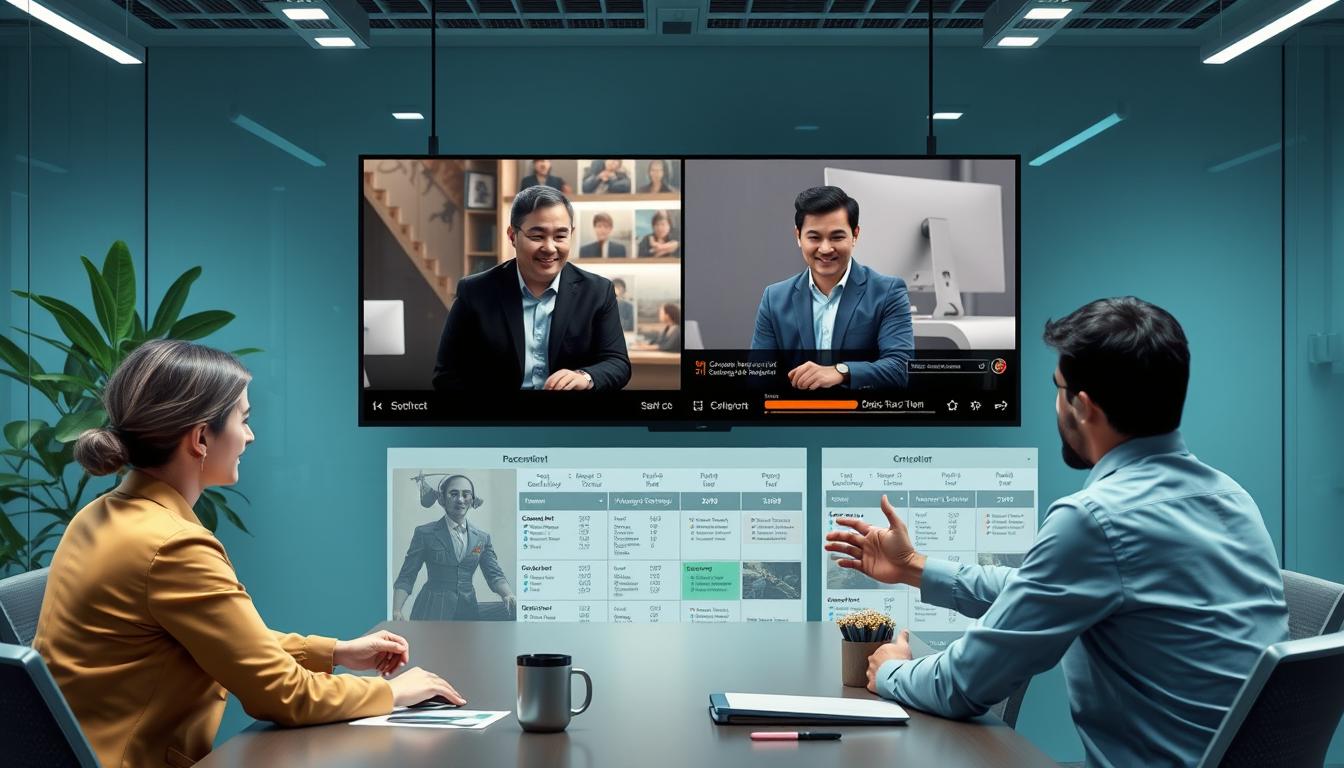
Technical Capabilities:
- "What information do you need from us to provide an accurate estimate for [specific asset type]?"
- "What is your typical timeline for producing [X number] of [specific asset type]?"
- "How do you handle scope changes after a project has begun?"
- "Can you share examples of similar projects you've completed in terms of style and scale?"
Team and Resources:
- "What does your typical feedback and revision process look like?"
- "How do you handle communication across different time zones?"
- "Who will be our primary point of contact, and what is their experience level?"
- "What project management and communication tools do you use?"
Skip the Guesswork
Our transparent process makes it easy to understand exactly how we work. Let's discuss your project requirements and how we can support your vision.
Start the ConversationShortlisting and Final Selection Process
After gathering information from multiple potential partners, a structured evaluation process helps you make the best choice for your specific needs. Follow these steps to systematically narrow down your options and select your ideal game art outsourcing partner.
- Create a weighted scoring system based on your project’s specific requirements. Assign higher weights to factors most critical to your success.
- Score each studio against your checklist criteria, using consistent evaluation metrics across all candidates.
- Conduct technical tests with your top 2–3 candidates. Request a small paid sample project that represents your actual requirements.
- Hold team-introduction calls with the actual artists and project managers who would work on your project, not just sales representatives.
- Review and negotiate contracts with your final candidates, ensuring all expectations are clearly documented.
- Make your final selection based on the comprehensive evaluation, not just price or portfolio.
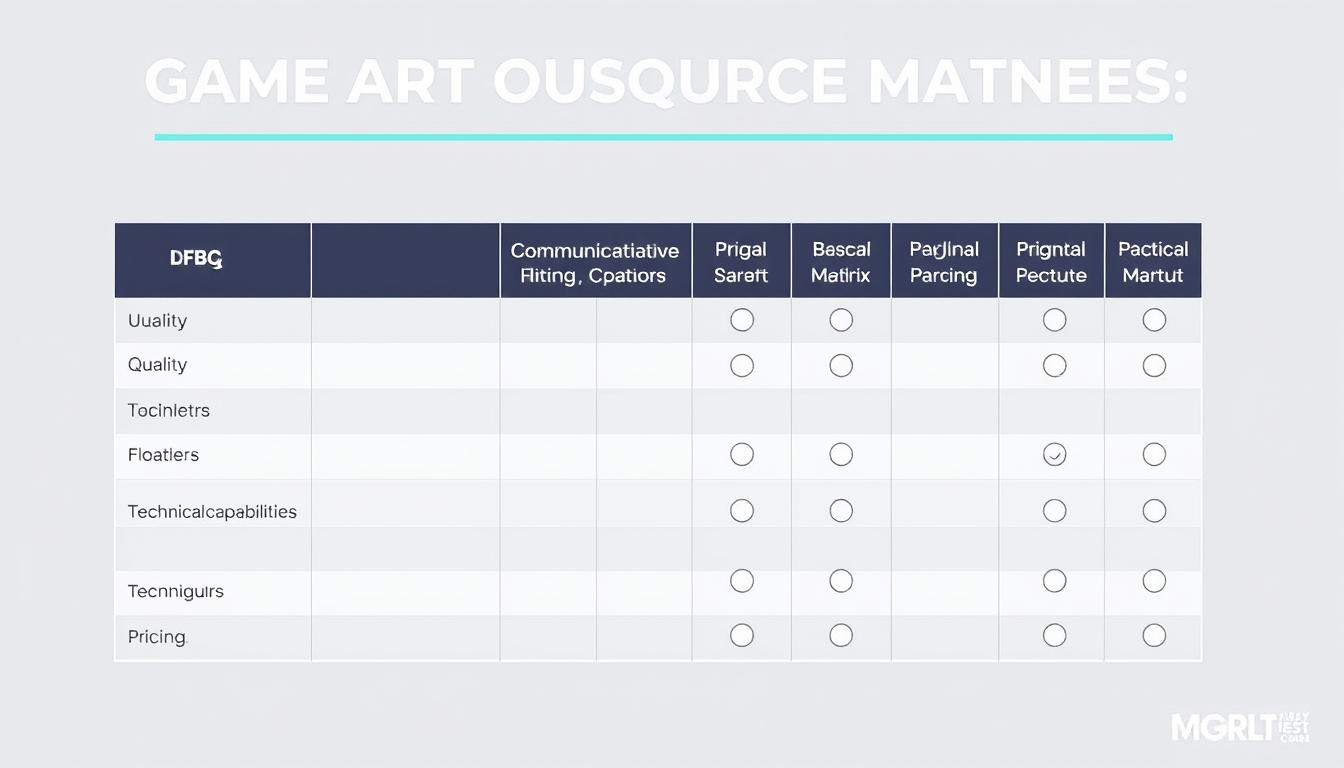
Pro Tip: Consider starting with a smaller project before committing to a large-scale partnership. This allows both parties to establish workflows and communication patterns with lower risk.
Building a Successful Long-Term Partnership
Selecting the right game art outsourcing partner is just the beginning. Nurturing the relationship over time leads to increasingly valuable collaboration as your partner develops deeper understanding of your brand, style, and workflow preferences.
The most successful outsourcing relationships evolve from transactional vendor arrangements into true partnerships where both studios grow together. By investing time in proper selection and relationship building, you gain more than just art assets—you expand your team's capabilities with trusted collaborators who are invested in your success.
Remember that communication, clear expectations, and mutual respect form the foundation of any successful outsourcing relationship. With the right partner and approach, game art outsourcing can transform from a necessity into a strategic advantage for your studio.
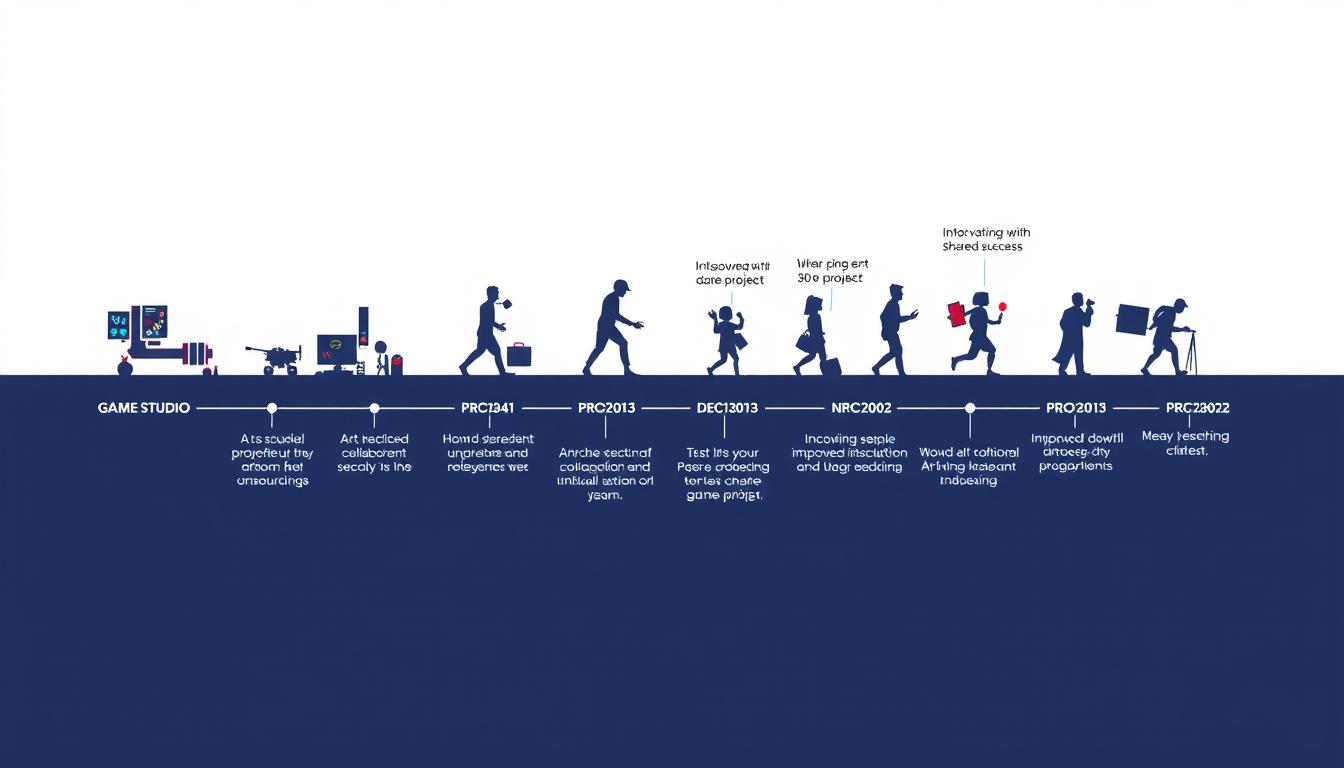
Ready to Find Your Ideal Game Art Outsourcing Partner?
We've helped studios of all sizes navigate the partner selection process. Let's discuss your specific needs and how we can bring your creative vision to life.
Schedule Your ConsultationLet's Discuss Your Game Art Needs
Tell us about your project and art requirements. Our team will get back to you within 24 hours to discuss how we can support your vision.
By submitting this form, you agree to our privacy policy. We'll never share your information with third parties.











